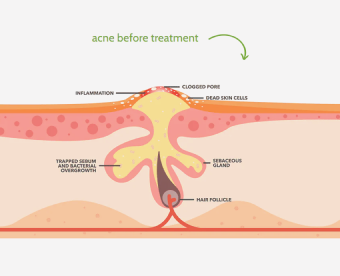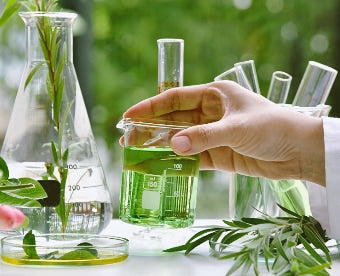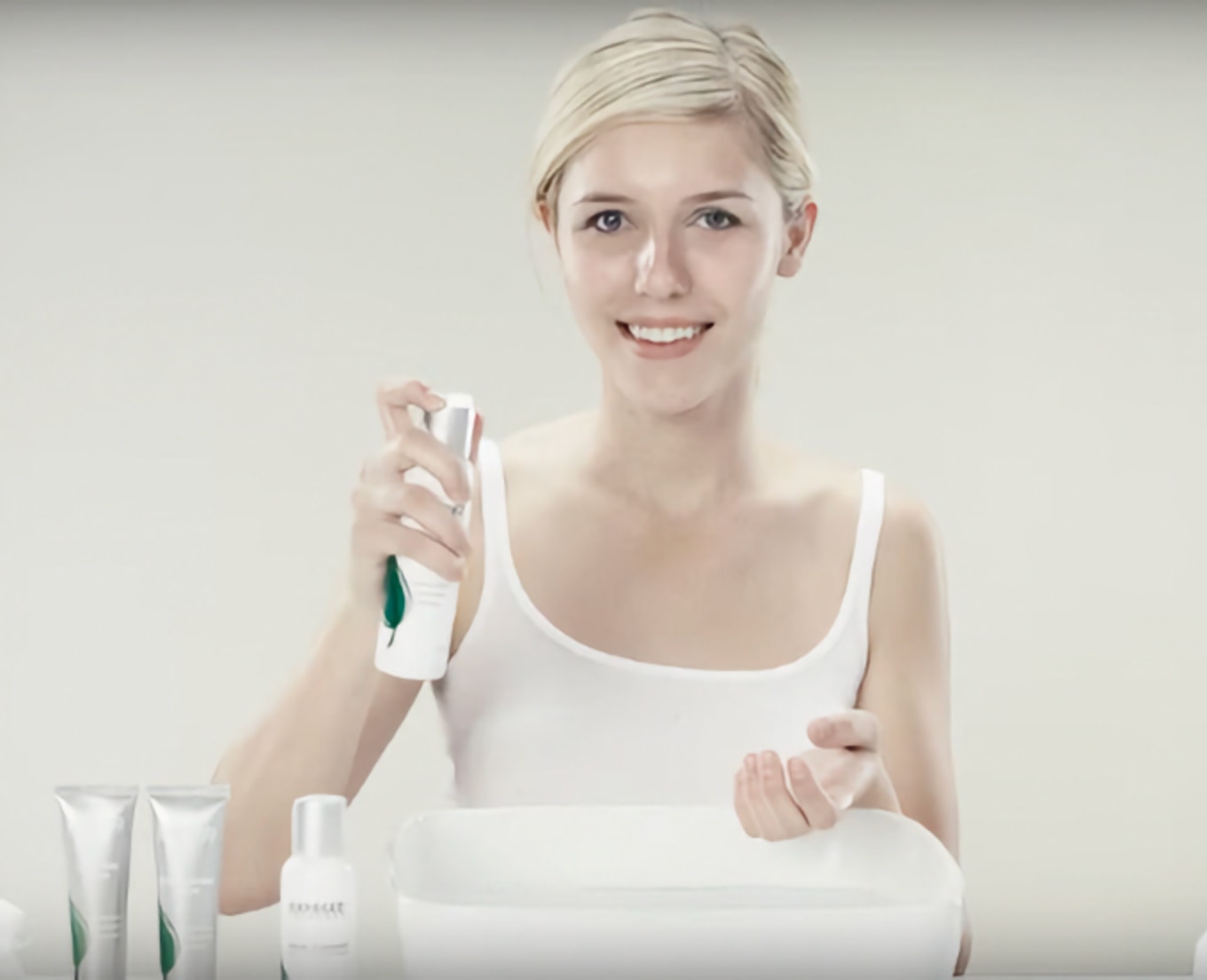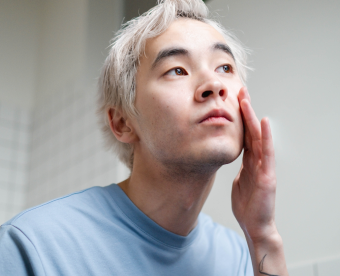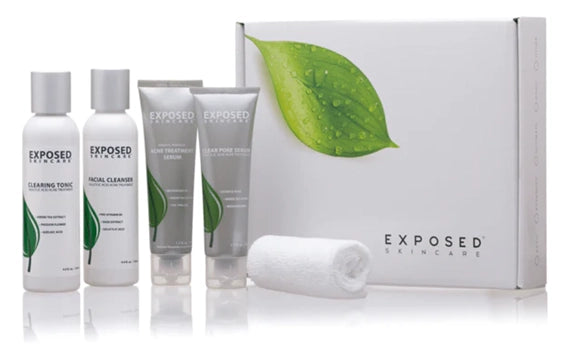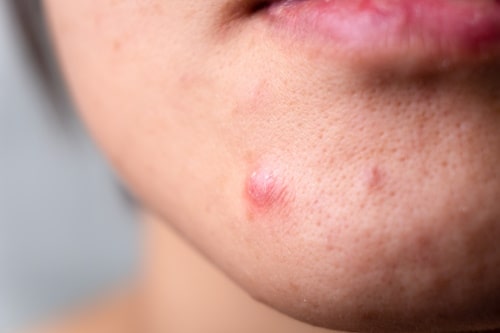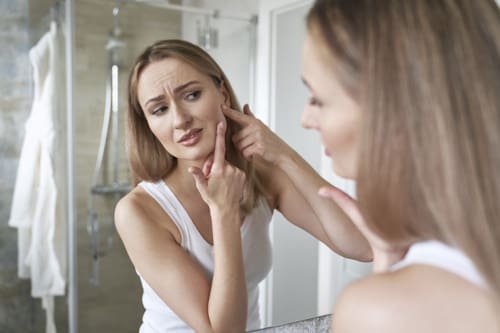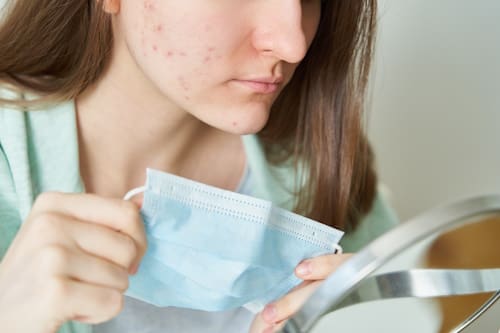Acne, a common yet often distressing skin condition, can prove to be a tenacious adversary for many. From mild to moderate acne to severe acne, the battle scars it leaves behind often transcend skin deep.
Enter the world of light therapy, an innovative solution that has caught the attention of many. More specifically, let's cast the spotlight on red light therapy for acne, a game changer in the landscape of acne treatment.
Also read: How to choose the best acne treatment
Biggest Take-Aways:
-
Red and blue light therapies provide a scientifically supported, non-invasive, and effective treatment for various types of acne, from mild to severe.
-
Dispelling common myths about light therapy, such as it causing skin damage or being painful, is crucial. Light therapy is safe, pain-free, and can be used for a range of acne severity.
-
A well-maintained post-therapy skincare routine, including gentle cleansing, hydration, and sun protection, is key to enhancing the effects of red light therapy and promoting healthier skin.
-
Exposed Skin Care offers a comprehensive acne therapy system that deeply cleanses the skin, treats acne, prevents clogged pores and enhances overall skin health. Suitable for different skin types, it's an excellent choice for acne management.

What is Red Light Therapy?
Red light therapy, also known as photobiomodulation, is a type of light therapy that utilizes low-level light-emitting diode (LED) technology. This therapy is known for its therapeutic benefits, including wound healing and anti-inflammatory benefits, particularly for skin conditions like acne.
Can Red Light Therapy Help Acne?
Yes, red light therapy can indeed help with acne. Research has shown that this form of therapy can effectively treat various forms of acne, including acne vulgaris, inflammatory acne, and even severe acne.
Red light therapy delivers wavelengths of natural sunlight, sans the skin-damaging UV rays, to the skin. These light wavelengths penetrate deep into the skin, stimulating cellular activity and enhancing blood circulation. This process aids in reducing inflammation and can accelerate the healing process of acne lesions.
Understanding the Mechanism of Red Light Therapy for Acne
The Role of Red Light
Red light therapy for acne involves the use of red light wavelengths. These wavelengths penetrate the skin's surface, reaching the oil glands. Doing so, they help reduce inflammation and promote healing, making them particularly effective for inflammatory acne lesions.
Moreover, red light therapy can also stimulate collagen production, aiding in skin rejuvenation and reducing the appearance of acne scars.
Blue Light Therapy: A Companion to Red Light
Interestingly, red light therapy for acne often works hand in hand with blue light therapy. Blue light targets the acne-causing bacteria, Propionibacterium acnes, that resides on the skin and inside the hair follicles, thus reducing acne breakouts.

Combining Red and Blue Light
Using red and blue light in therapy for acne creates a synergy that effectively tackles acne from multiple angles. While red light reduces inflammation and promotes healing, blue light zeroes in on the bacteria causing the acne. Combining red and blue light therapy is a promising approach for treating acne.
How Often Should I Do Red Light Therapy for Acne?
The frequency of red light therapy for acne can vary based on the severity of the acne and the specific red light therapy device being used. Generally, a consistent treatment session regimen, typically four to six weeks, is recommended for optimal results. It's important to follow the instructions provided with your specific device.
Does Red Light Help with Cystic Acne?
Yes, red light therapy can assist in treating cystic acne, a type of severe acne. By penetrating deep into the skin, red light can reach the inflamed cysts that characterize this type of acne, helping to reduce inflammation and promote healing.
Weighing Red Light Therapy Against Other Acne Treatments
There are various traditional topical treatments for acne, such as salicylic acid and benzoyl peroxide. While these treatments can be effective, they often have side effects such as dryness and irritation.
In contrast, red light therapy for acne offers a non-invasive, pain-free alternative. It doesn't rely on harsh chemicals or cause uncomfortable side effects, making it a preferable option for many, especially those with sensitive skin.

Acne Scarring and Red Light Therapy
Acne scarring is a common concern for those with moderate to severe acne. Red light therapy can be a boon here too. By stimulating collagen production, it promotes the healing of the skin and the reduction of scar appearance. This makes red light therapy a holistic solution, targeting active acne and addressing the aftermath.
Navigating the World of Red Light Therapy Devices
From at-home devices to professional treatment in a dermatologist's office, the options for red light therapy for acne are diverse. Choosing the right one will depend on various factors, including the severity of the acne, the area of the body affected, and personal preference.
At-Home Devices
At-home devices for red light therapy are becoming increasingly popular. They offer the convenience of conducting treatment sessions in the comfort of your own home. However, the clinical efficacy of these devices can vary, and it's important to choose a device that has been scientifically tested and proven effective.
Professional Treatment
Professional treatment may be the best route for those seeking a more potent treatment or dealing with severe acne. These treatments are conducted in a controlled environment and often use stronger light devices capable of delivering more intense light wavelengths.
Precautions and Considerations
While red light therapy for acne is generally safe, there are still precautions to be mindful of:
-
Skin Sensitivity: Although rare, some people may experience mild discomfort or sensitivity post-treatment. Testing the therapy on a small patch of skin is recommended first.
-
Consistency: Consistency is key with red light therapy. Regular treatment sessions are needed to see significant improvement.
-
Avoid Tanning Beds: It's important to remember that tanning beds are not a substitute for red light therapy devices. They emit harmful UV rays, which can cause skin damage.
-
Professional Consultation: Although you've chosen not to include dermatologist consultation, it's essential for individuals to thoroughly research and consider all aspects before starting a new treatment.
The Science Behind Red and Blue Light Therapy
One of the most fascinating aspects of red light therapy for acne is the science that supports it. This innovative approach leverages the power of light to treat acne, a premise that is backed by extensive research and scientific evidence.
Studies have shown that red light can penetrate deep into the skin, reaching the oil glands, often the main culprits behind acne breakouts. Once there, the red light is believed to stimulate blood circulation and promote healing, reducing inflammation and helping to clear acne lesions.
Moreover, red light therapy has been shown to have anti-inflammatory benefits, further aiding in treating inflammatory acne. It also promotes collagen production, which is essential for skin healing and rejuvenation, thereby reducing the appearance of acne scars.

On the other hand, blue light targets the acne-causing bacteria, Propionibacterium acnes, that live on the skin. These bacteria are sensitive to blue light, which can effectively kill them and reduce acne breakouts.
Some key points from randomized controlled trials and systematic reviews include:
-
Red light therapy has been found to be effective in reducing both inflammatory and non-inflammatory acne lesions.
-
Blue light therapy has demonstrated efficacy in reducing the count of acne-causing bacteria on the skin.
-
Combination therapy using both red and blue light can be more effective than using either light alone.
-
Light therapy for acne is generally well-tolerated, with few side effects reported.
Myths and Misconceptions About Light Therapy
Despite light therapy's growing popularity and scientific backing for acne, several myths and misconceptions persist. Addressing these misconceptions can help individuals make more informed decisions about their acne treatment.
Myth 1: Light Therapy Causes Sunburn or Skin Damage: Unlike natural sunlight or tanning beds, light therapy does not emit harmful UV rays. Red and blue light therapies are safe and do not cause skin damage.
Myth 2: Light Therapy is Painful: Light therapy is a non-invasive, pain-free treatment. Some people might experience a warm sensation during treatment, but it's generally not uncomfortable.
Myth 3: Light Therapy Results are Immediate: While light therapy can significantly improve skin condition, it's not an overnight solution. Consistent treatment sessions over several weeks are usually needed to see noticeable results.
Myth 4: Light Therapy Only Works for Mild Acne: Light therapy can be effective for various types of acne, from mild to moderate facial acne to more severe forms. The effectiveness may depend on the severity of the acne and the specific device used.
Post-Red Light Therapy Skincare Routine
Maintaining a good skincare routine is crucial after undergoing red light therapy sessions. Proper aftercare can enhance the results of the treatment and promote healthier skin.
Here are some tips:
-
Keep the Skin Clean: Cleanse your skin gently using a mild cleanser before and after the treatment to keep the pores clear.
-
Hydrate: Hydrating the skin is essential. Use a good quality, non-comedogenic moisturizer that won't clog your pores.
-
Use Sunscreen: Although red light therapy doesn't increase sensitivity to the sun, it's always a good idea to protect your skin from sun exposure. Use a broad-spectrum sunscreen with an SPF of at least 30.
-
Avoid Harsh Skincare Products: Your skin may be more sensitive after a red light therapy session. Avoid using harsh skincare products or exfoliants that could irritate the skin.

-
Maintain Consistent Therapy Sessions: Consistency is key with red light therapy. Regular treatment sessions are needed to see significant improvement.
-
Monitor Your Skin’s Reaction: Keep a close eye on your skin after treatments. If you notice any adverse reactions or if your acne seems to worsen, it may be necessary to adjust your treatment plan.
Remember, everyone's skin reacts differently to treatments, so it may take some time to find the post-therapy skincare routine that works best for you. A solid post-therapy skincare routine can significantly affect your red light therapy results. It can enhance the effects of the treatment, prevent new breakouts, and maintain the health of your skin.
The Benefits of Exposed Skin Care in Acne Management
Exposed Skin Care is a comprehensive acne therapy system that offers many benefits for individuals with acne. This advanced skincare regimen combines science and nature to manage acne and promote healthier skin effectively.
Here as some of its benefits:
-
Deep Cleansing: Exposed Skin Care products deeply cleanse the skin, unclogging pores and removing impurities. This helps to prevent new acne breakouts.
-
Acne Treatment: The active ingredients in Exposed Skin Care products are specifically formulated to target acne-causing bacteria, reducing the occurrence of acne lesions.
-
Prevention of Clogged Pores: Regularly using Exposed Skin Care products helps keep the pores free from oil and dead skin cells, significantly reducing the chances of clogged pores.
-
Enhances Skin Health: Besides treating acne, Exposed Skin Care products also improve overall skin health. They promote skin rejuvenation, leading to brighter and smoother skin.
-
Suitable for Different Skin Types: Whether you have oily, dry, or combination skin, Exposed Skin Care offers products suitable for different skin types.
Incorporating Exposed Skin Care in your daily routine can prove beneficial in not just treating existing acne but also preventing future breakouts. Its holistic approach to acne therapy makes it an excellent choice for acne management.
Conclusion
Acne is a prevalent skin condition that can be managed effectively with innovative and scientifically supported treatments like red and blue light therapy. These therapies represent a leap forward in skincare technology, offering a non-invasive, pain-free, and effective means to treat various types of acne, from mild to severe.
Understanding the science behind these therapies reveals how they penetrate deep into the skin layers, targeting acne-causing bacteria and stimulating healing processes. They work to reduce inflammation, promote collagen production, and clear acne lesions, leading to healthier, clearer skin.
It's also essential to dispel misconceptions surrounding light therapies. These treatments do not cause skin damage or sunburn, as they do not emit harmful UV rays. They are safe, well-tolerated, and can be adjusted to suit different acne severities and skin types.
Equally important in the journey towards clear skin is the post-therapy skincare routine. Gentle cleansing, sufficient hydration, consistent sun protection, and the use of non-irritating products can enhance the effects of light therapy and promote healthier skin in the long run.
Finally, complementing light therapy with comprehensive acne management systems like Exposed Skin Care can further boost treatment outcomes. This product line offers a unique combination of science and nature, effectively treating acne, preventing clogged pores, and enhancing overall skin health.
Frequently Asked Questions (FAQs)
Can I use red light therapy for facial acne?
Yes, red light therapy is safe and effective for facial acne. Both red and blue light therapies have been shown to help reduce acne breakouts and improve the skin's overall condition.
How does red light therapy compare to other acne treatments like chemical peels or benzoyl peroxide?
Red light therapy is a non-invasive, pain-free treatment that doesn't rely on harsh chemicals. It can be a preferable option for those with sensitive skin or those who have had negative experiences with other acne treatments.
Can red light therapy help with acne scars?
Yes, red light therapy can stimulate collagen production, promoting skin rejuvenation and reducing the appearance of acne scars.
How many treatments will I need to improve my acne condition?
Generally, a consistent treatment session regimen, typically four to six weeks, is recommended for optimal results. However, this can vary based on the severity of the acne and the specific red light therapy device being used.
Can red light therapy help with cystic acne?
Yes, red light therapy can assist in treating cystic acne, a type of severe acne. The red light penetrates deep into the skin, reaching the inflamed cysts, helping to reduce inflammation and promote healing.
Is red light therapy for acne safe?
Red light therapy is generally considered safe. It's non-invasive and does not cause skin damage associated with natural sunlight or tanning beds. However, as with any treatment, individual experiences can vary.
Can I do red light therapy for acne at home?
Yes, there are at-home devices available for red light therapy. However, the effectiveness of these devices can vary, so it's important to choose a device that has been scientifically tested and proven effective.
What is the role of blue light in treating acne?
Blue light therapy is often used with red light therapy for acne. Blue light targets the acne-causing bacteria, Propionibacterium acnes, reducing acne breakouts.
Is red light therapy painful?
No, red light therapy is not painful. Some people might experience a warm sensation during treatment, but it's generally pain-free.
How soon can I see results from red light therapy for acne?
The timeline for seeing results can vary depending on the severity of the acne and the frequency of treatments. However, many people see improvements after a few weeks of consistent treatment.
It's important to remember that while red light therapy for acne is a promising treatment, results can vary from person to person. Patience and consistency are key to achieving the best results. With this innovative approach, the future of acne treatment looks bright indeed!

